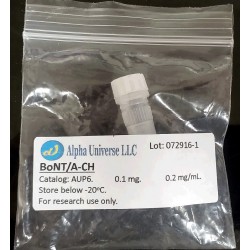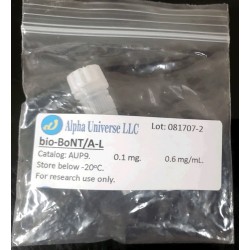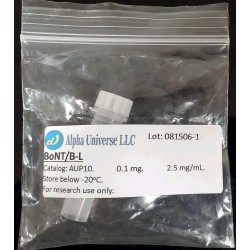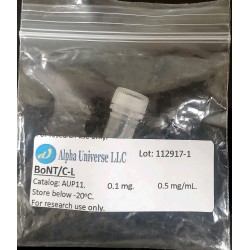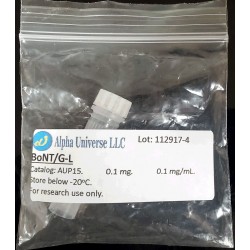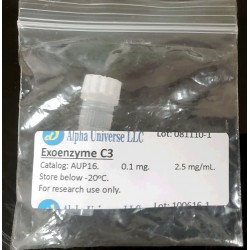Clostridium botulinum
Botulinum neurotoxins are the most potent toxins known to mankind. Seven immunologically distinct serotypes of neurotoxin, designated types A through G (BoNT/A, BoNT/B, BoNT/C, BoNT/D, BoNT/E, BoNT/F, BoNT/G), have been identified.
These homologous toxins specifically target neurons and act through interruption of the process of neurotransmission. This interruption results in muscle paralysis, which, in severe cases of intoxication, leads to death from asphyxiation of humans and animals.
Botulinum neurotoxins are produced by host bacterial cells in the form of single polypeptide chains, which are about 1500 amino acid residues in length (Mr~150 kDa). A single molecule of each toxin possesses three functional domains: receptor-recognizing, transport and catalytic. Catalytic domains of these toxins are Zn2+ metallo-proteases that recognize and selectively cleave proteins involved in targeting of presynaptic vesicles and their fusion with the neuronal plasma membrane. In this way, neurotoxins block neurotransmitter release into the synaptic cleft. Although there is a certain degree of homology between different clostridial neurotoxins, their catalytic domains recognize different substrates: BoNT/B, /D, /F and /G cleave synaptobrevin 2, BoNT/A, /C and /E – synaptosomal-associated protein of 25 kDa (SNAP25) and BoNT/C – syntaxin. Catalytic domains of clostridial neurotoxins are inactive while connected to the rest of the polypeptide chain by a peptide bond and a disulfide bond. As a result of limited proteolysis conducted in the presence of reducing agents, a single polypeptide chain of each neurotoxin can be converted into two chains: light (Mr~50 kDa) and heavy (Mr~100 kDa). The light chain corresponds to the catalytic domain while heavy chains of these neurotoxins contain the receptor-recognizing and transport domains, and are responsible for transport of corresponding light chains into the cytosol of neuronal cells.

